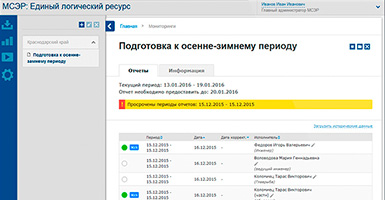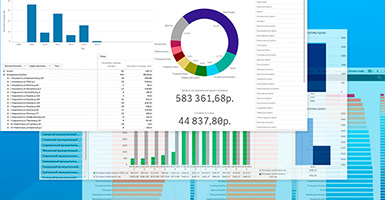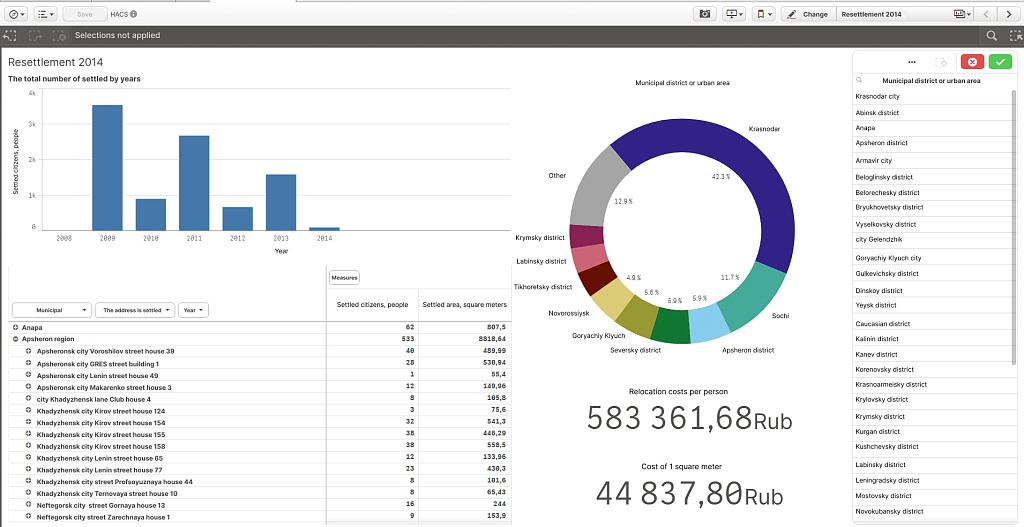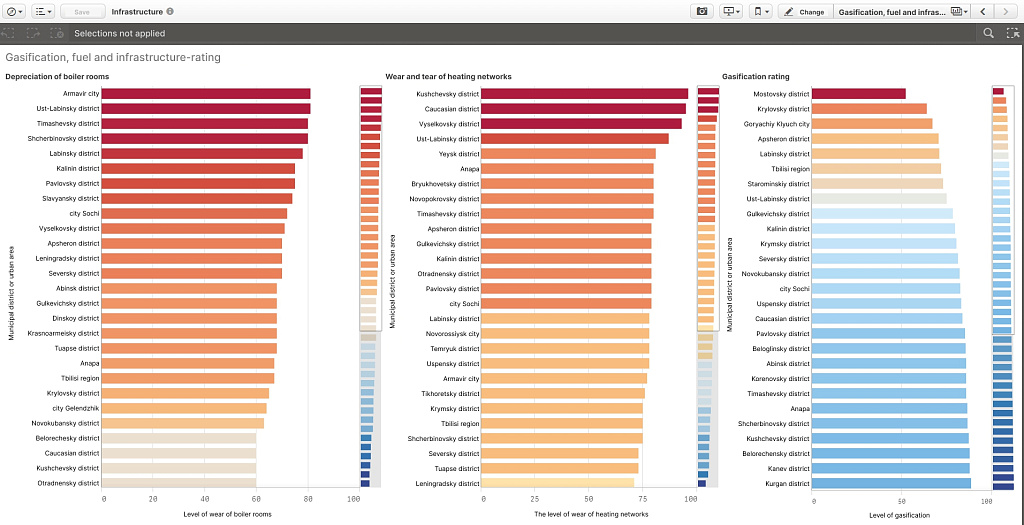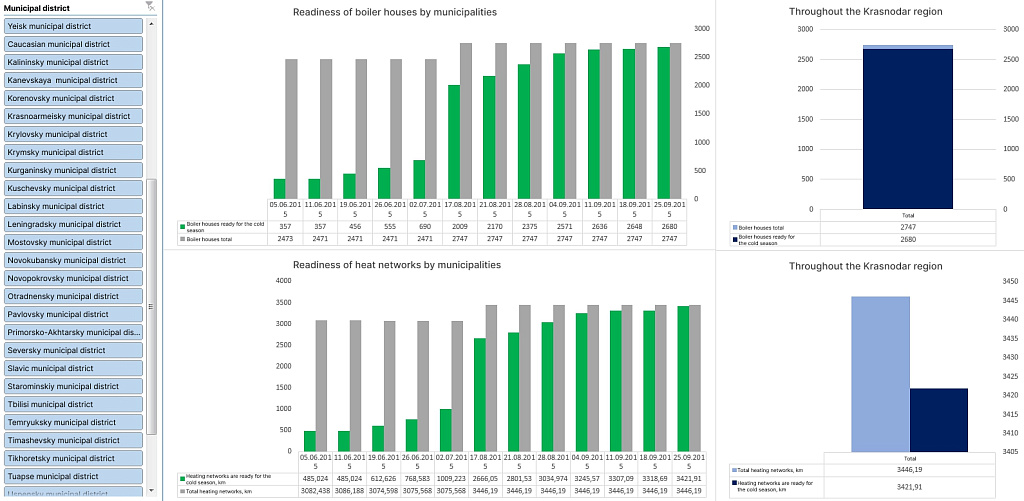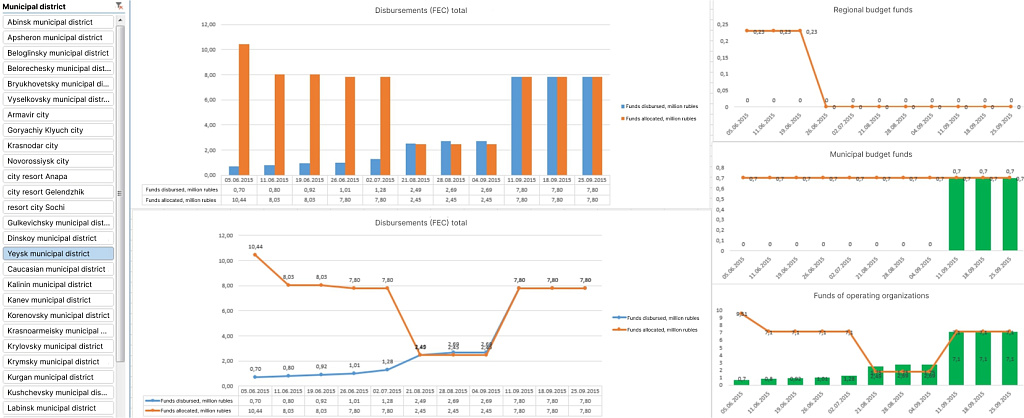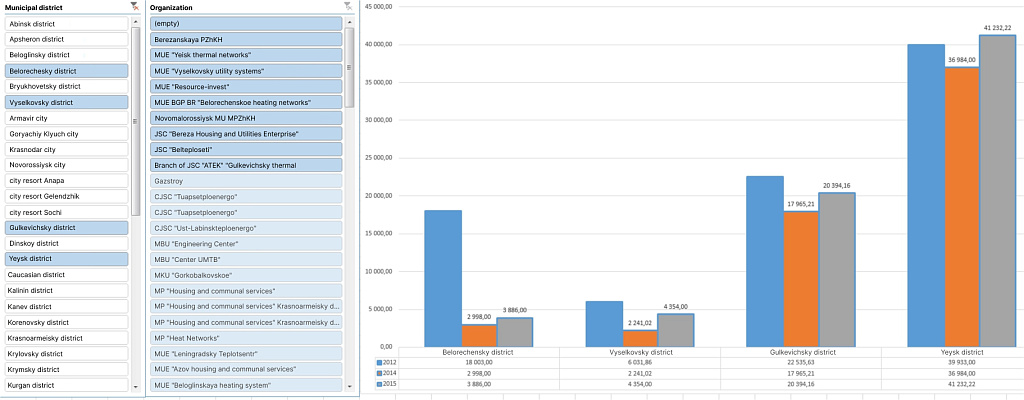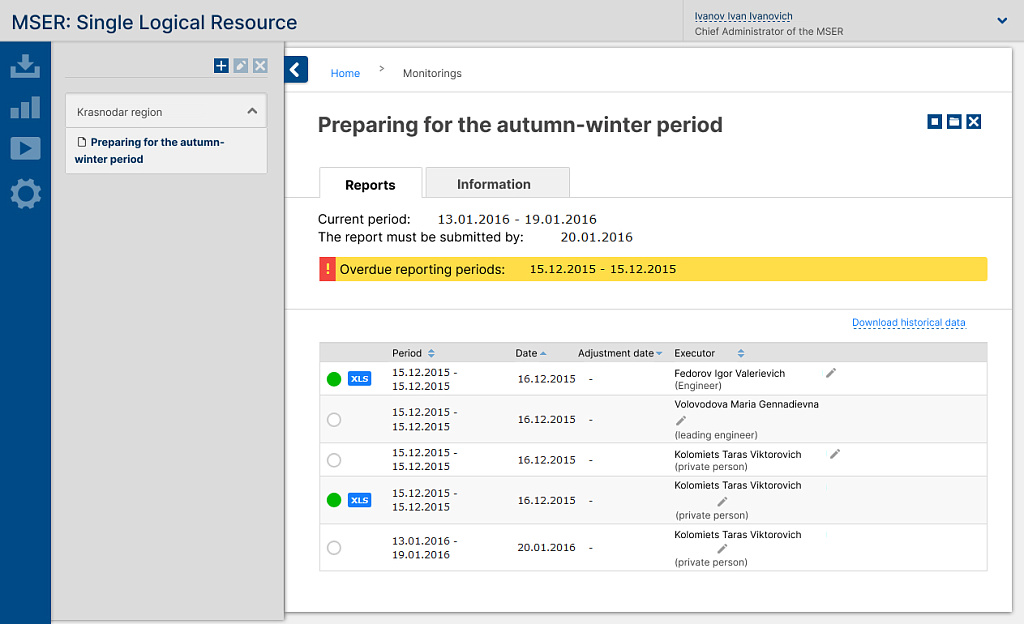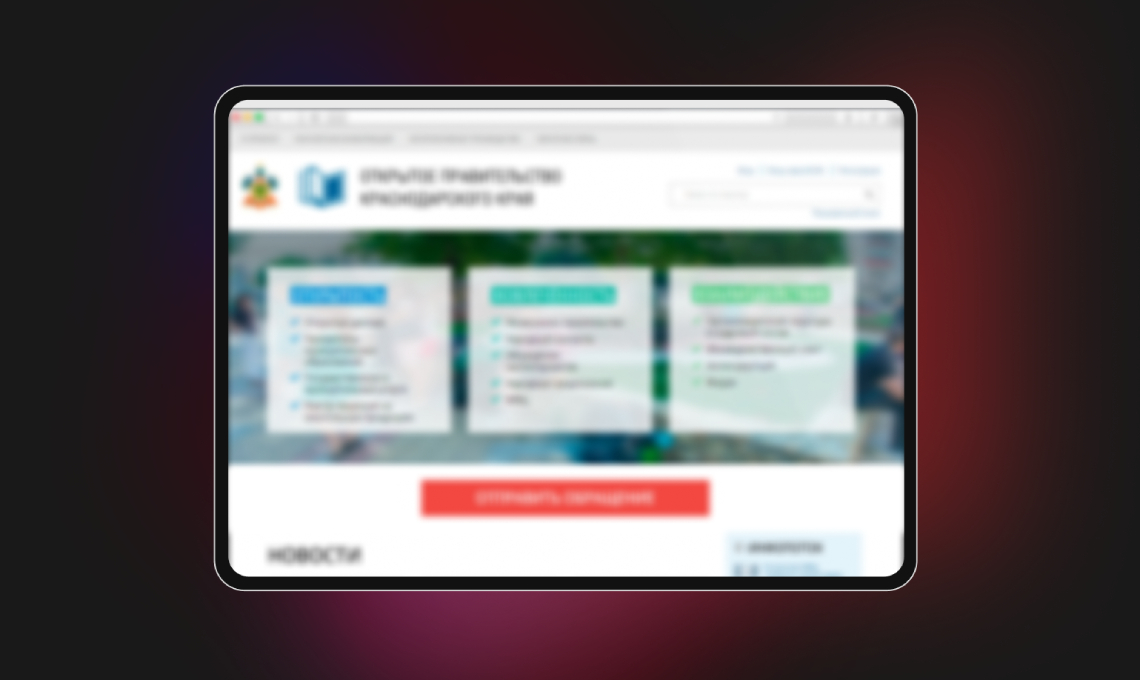About project
Facts
Customer

Department of Informatization and Communications of the Krasnodar Region
Krasnodar region is a federal subject of Russia, located in the Southern Federal District. The region's population is about 5.5 million people on a territory of 75,485 sq. km.
The Region is characterized by industrial and agro-recreational types of development. The basis of the regional productive forces constitutes the industrial, construction and energy complexes, information and communication technologies, as well as agro-industrial, transport, resort and recreation, and tourist complexes. The last three - agriculture, transport, and hotel & tourist complexes - correspond to the priorities of the socio-economic development of Russia and determine the special status of the Krasnodar Krai in the national economy.
Also Krasnodar region city Sochi was the host city of the Winter Olympic Games of 2014.
Goal
The aim is to ensure prompt access to any indicator or report generated by the regional government departments, local governments, or state-owned companies.
Tasks
To build up a collection statement system that implements a dataflow of reports concentrated on every government level.
To analyze, structure and import into system database reports for the period of three years.
To integrate an interactive reporting and dashboard platform.
To integrate a business intelligence platform for interactive multidimensional analysis and visualization.
Create the reports templates for people in charge by their areas of responsibility.
Implement customised reporting based on open source BI software.
Implementation
Spellsystems has developed a comprehensive solution consisting of six components:
-
Workflow management system
-
Database server
-
Reporting system
-
Intelligence system
-
Mobile applications
-
Desktop applications
The workflow management system enables state offices to create and manage complex indicators, and provides two key functionalities: workflow development and statement collection. Workflow development includes account and access management, government structure management, index management, reporting schedule management, index integration and calculation rules management. Statement collection implements the created workflows and offers reporting forms delivery, automated schedule control, indicator value consistency control, indicator integration, and presentation.
All the indices are stored in a central database, which is divided into two parts: operational and statistical. The operational database stores all the necessary data for proper system functioning and indicators that are still being revised. The statistical database stores all the verified and approved index values collected at any time.
The reporting system includes an interactive report builder and a reporting website. The interactive report builder is a tool for developing visual and in-code reports, and supports various types of data presentation such as charts, tables, lists, and maps. It also supports calculations and data filtration. All the reports are connected to the statistical database and use only accepted data values. The reporting website is where the developed reports come to life, and state officers and those in charge can access the reports related to their area of responsibility.
The intelligence system is a set of tools for interactive data analysis, including pivot tables, charts, timelines, drilling, filtering, and other tools. It allows government and municipality analysts to view data from different perspectives and create real-time data views.
Mobile applications are pocket reporting tools that provide easy access to any index of any branch, department, or division. They operate using the same interactive report repository created in the reporting system and cache all the downloaded indicator values for use in offline mode.
Desktop applications are electronic documents designed in office applications that support business intelligence or interactive reporting features. Most of them are built using Microsoft Excel with PowerPivot and PowerView tools, while others are built using QlikTech Qlik Sense or Tableau Desktop, depending on the end user's preferences. All the desktop applications retrieve actual data values from the statistical database.
Results
Our company is in a process of creating a web interface where all of the system participants can load the new data for analysis. The system will provide a unified method for defining collecting parameters including a list of indexes, information senders and receivers and frequency.
After creating the collecting flow the system launches a schedule that informs participants about data status changes, deadlines, new information requests etc.
The reliability of all incoming data portions is controlled in two ways: automatically and manually.
We have created over a dozen interactive dashboards on various fields governed by region authorities. The list includes budget revenues, application of funds, resettlement from dilapidated cost, fuel and energy infrastructure condition, house readiness for the heating season, multi-functional centres efficiency etc.
A typical dashboard indicates the most important features of the activity field and allows making decisions based on a comparison between factual and planned values, observing the current state, and completion percentage on interactive graphics.
Presentation
Technologies
- Java (Android)
- Java (J2EE)
- SWIFT
- Wildfly
- Microsoft PowerPivot
- Microsoft PowerView
- Pentaho Mondrian
- PostgreSQL
- Qlik Sense Desktop
- Jasper Reports
- JavaScript (jQuery)
